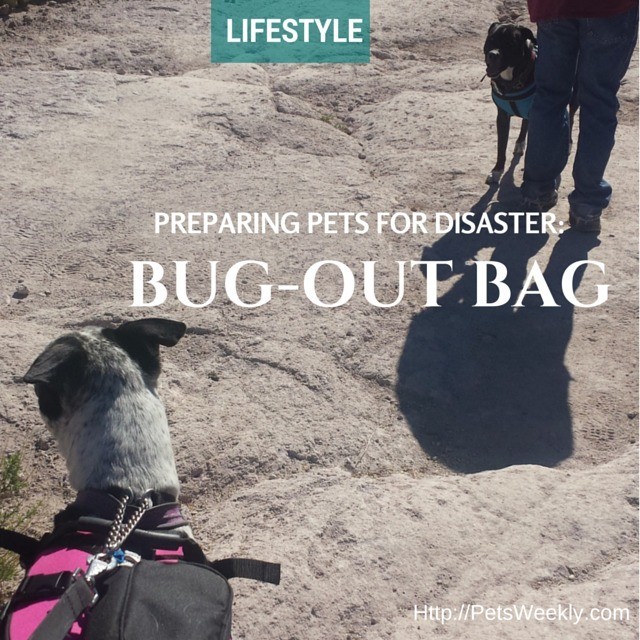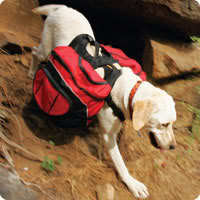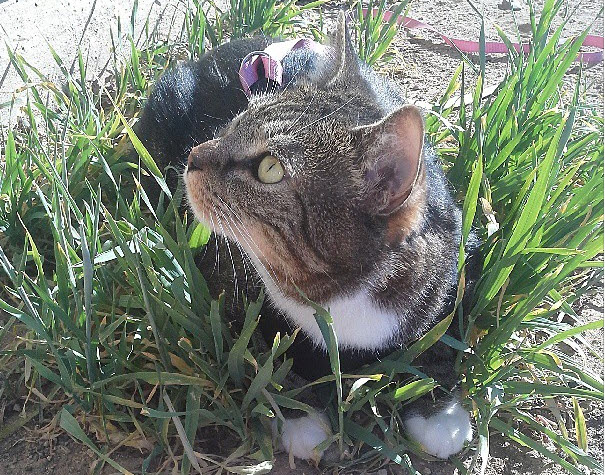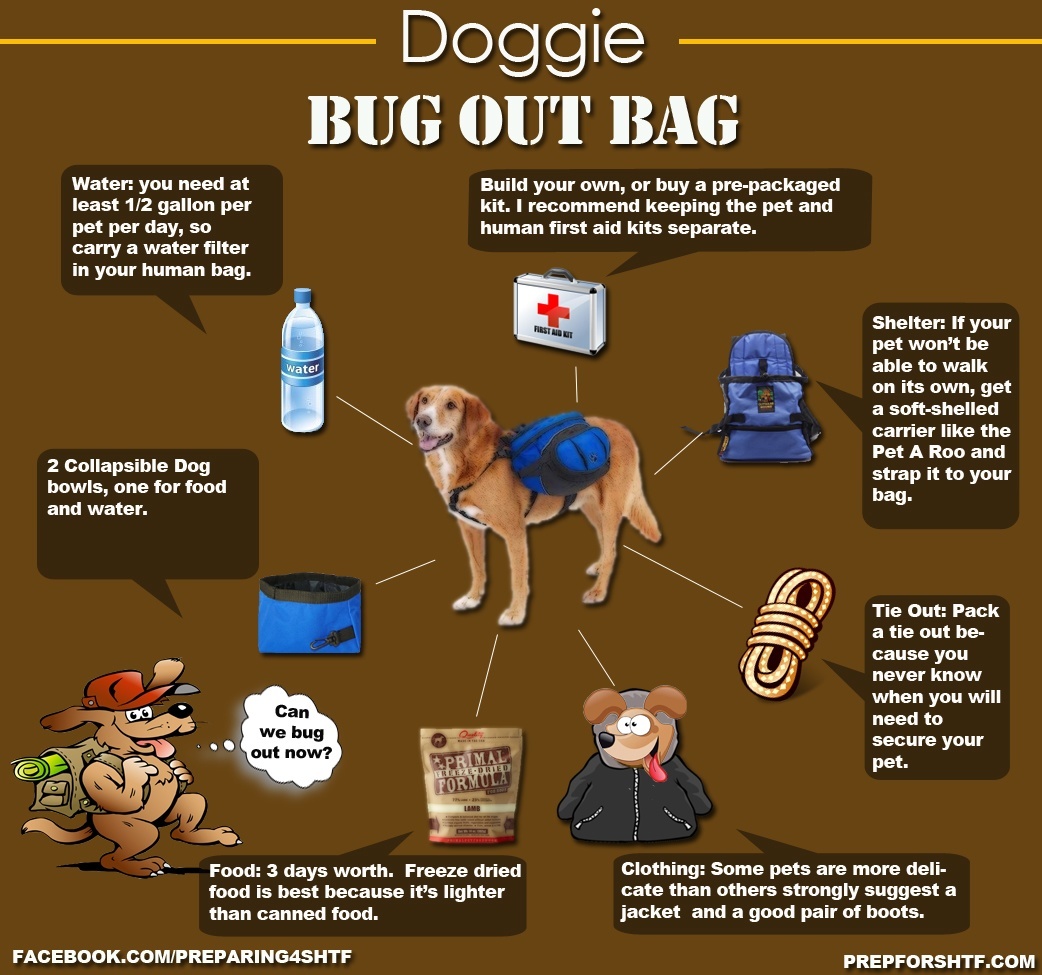Preparing Your Pets for Disasters: The Bug-Out Bag
Share

 Whether it’s due to fire, a flood, or a zombie apocalypse, the minds of many turn to preparing for disaster. Some may have a stockpile of canned goods and water, and others may have gone so far as to have a “bug-out” plan – including a separate bag designed that can be grabbed the moment it’s needed, a vehicle or other means of transportation always kept at the ready, and a location chosen to “bug out” to ahead of time.
Whether it’s due to fire, a flood, or a zombie apocalypse, the minds of many turn to preparing for disaster. Some may have a stockpile of canned goods and water, and others may have gone so far as to have a “bug-out” plan – including a separate bag designed that can be grabbed the moment it’s needed, a vehicle or other means of transportation always kept at the ready, and a location chosen to “bug out” to ahead of time.
But even if you don’t believe disaster is imminent, having a “bug-out” or “go” bag is a very good idea in case evacuation becomes necessary for any reason.
So what is a bug-out plan? Simply put, having a bug-out plan means you have whatever you need to survive for 48-72 hours at the ready in a moment’s notice. Please note the word survival. Bugging out is all about getting out, and getting out as fast as you can – comfort is the lowest priority here. Preparing to bug out is completely different than planning for long-term survival, so please keep that in mind as you read this article.
While it’s important for you to prepare you and your human family for the possibility of having to leave your home in a hurry, we’re going to focus on getting your pets ready.
We’ll be covering the basics for pets, but for more detailed information on creating bug-out bags for humans, follow the links below.
- Sibi Totique: Bug Out Guide and Checklist
- Survival Cache: Bug Out Bag – The 7 Types of Gear You Must Have to Survive
- American Rifleman: The Bug-Out Bag: Homemade Survival Kits
If you have a larger dog, they can carry their own pack filled with the items essential to their survival. If not, then you’ll need to either pack a separate bag with those items, or include them in your own bug-out bag.
Make sure the pack fits well and that your pet can handle the weight. A pack should never weigh more than 20% of your dog’s weight (and even that is a lot, but if it’s for a short distance, they can handle that amount well).

Make sure your pets are accustomed to carrying a pack. It’s a great idea to use these packs during walks so your pets are okay with them. This is especially important if you ever do need to “bug out” quickly.
In addition to the items below, it is important to keep a copy of your pet’s vaccination records and registration in case you need to gain access to a shelter.
Here’s our list of items you should have in your pet’s bug-out supplies.

This is the most vital piece of preparation. The amount of water your pets will need depends on a large number of variables: breed, size, diet, weather, illnesses, etc. While you want to bring as much water as possible, if you have to bug out on foot, it gets pretty heavy and takes up a lot of room. A good rule of thumb is to have half a gallon of water per pet, per day.
If your dog will be carrying their own pack, you’ll want to get them used to wearing it now. Start slowly by taking walks with an empty pack, and gradually build to where they’re carrying their own supply of water with ease. Again, with smaller dogs, you’ll have to carry it for them.
Don’t forget a collapsible bowl! Pack one for each pet. They don’t take up a lot of space.
Some packs (such as the RuffWear Palisades Pack Dog Backpack come complete with water skins built into the pack).
[load_module id=”210″]
[heading style=”1″ color=”#996633″ style_color=”#996633″]2. Food[/heading]
Pack a three-day supply of food. Dry food is best because it’s lighter than canned food. If for any reason you must bring canned food, make sure you include a manual can opener (or learn how to open cans on asphalt!).
[youtube url=”https://www.youtube.com/watch?v=oH2NahLjx-Y”] [heading style=”1″ color=”#996633″ style_color=”#996633″]3. Identification and Leash/Harness[/heading]You should always have an updated photo of you and your pet together. It’s also important to have photos of your pets with individual markings shown so that you can clearly identify your dog, cat, or horse as your own.
In addition to the photos, you should have a copy of your microchip information, your vaccination records and any other important documents you and your pet may need. These should all be placed in a sealed plastic bag in case your go-bag gets wet.
Your pet should be wearing a well-fitted collar or harness, with ID attached, at all times. Don’t forget a reliable leash!
[load_module id=”210″][heading style=”1″ color=”#996633″ style_color=”#996633″]4. First Aid Kit[/heading]
Build your own, or buy a pre-packaged kit. Include a supply of any medications or supplements and a copy of their vet records. Click here for a list of items you might want to include in your pet’s first aid kit. We recommend keeping the pet and human first aid kits separate to avoid confusion.
[load_module id=”582″][heading style=”1″ color=”#996633″ style_color=”#996633″]5. Shelter[/heading]
If your pet won’t be able to walk on its own, get a soft-shelled carrier that can be carried over your shoulder or strapped to your bag. One of our favorites for small dogs and cats is the Sherpa carrier. There are also rolling carriers available (and even strollers) if carrying your pet may become stressful for you.
[note type=”success” icon=”yes”]TIP: Practice putting your pet in the carrier (use lots of treats) repeatedly until they no longer get stressed by the activity.[/note]Make sure there will be enough room in the shelter you prepare for yourself (see the links above) to house all of your pets – including the ones in carriers.
[heading style=”1″ color=”#996633″ style_color=”#996633″]6. Clean-Up[/heading]If you have to bug out, picking up your dog’s poop won’t be high on your list of priorities, but bring along a small container of cat litter. If there are any accidents in their carrier, in the car, or wherever else, you can use the cat litter to absorb the mess. Also place ten paper towels in a plastic zipper bag and shove them in with your supplies wherever they’ll fit.
While the idea of planning for disaster may be as agreeable to you as writing your will, it’ll give you more peace of mind knowing that you and all of your family – pets included are prepared. With a little work now, you could be saving your pet’s life if the unthinkable ever happens.
[heading style=”1″ color=”#996633″ style_color=”#996633″]OPTIONAL: Clothing, Boots, and Blanket[/heading]We strongly suggest a jacket or vest and a good pair of boots. If your pet will be carried rather than walk alongside you, the jacket only needs to keep them warm. But, if they’ll be walking, make sure the jacket and boots are sturdy enough to protect them from burrs, sticks, rocks, and anything else that might cause irritation to their fur, skin, or paws.

What about you? Do you have any plans on what to do with your pets if you’re forced to evacuate? Tell us your tips and ideas below.
[box title=”Read more about Disaster Awareness and Planning for Pets:” box_color=”#996633″]Read more about emergency planning for pets:
- Keeping You and Your Pets Safe Without Power in Winter
- Keeping Pets Safe Without Power in Summer
- 6 Ways to Keep Dogs Entertained During Disasters
- National Animal Disaster Preparedness Day
- Preparing Your Pets for Disasters: The Bug-Out Bag









